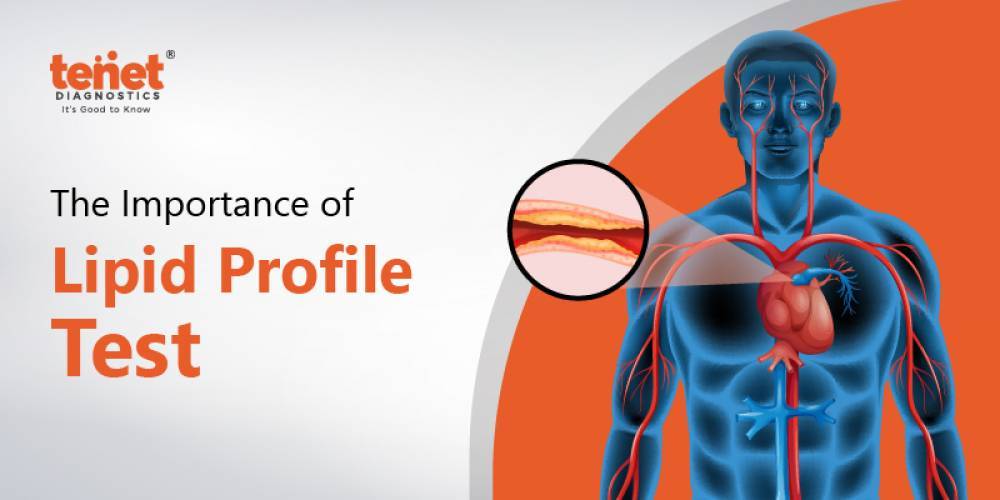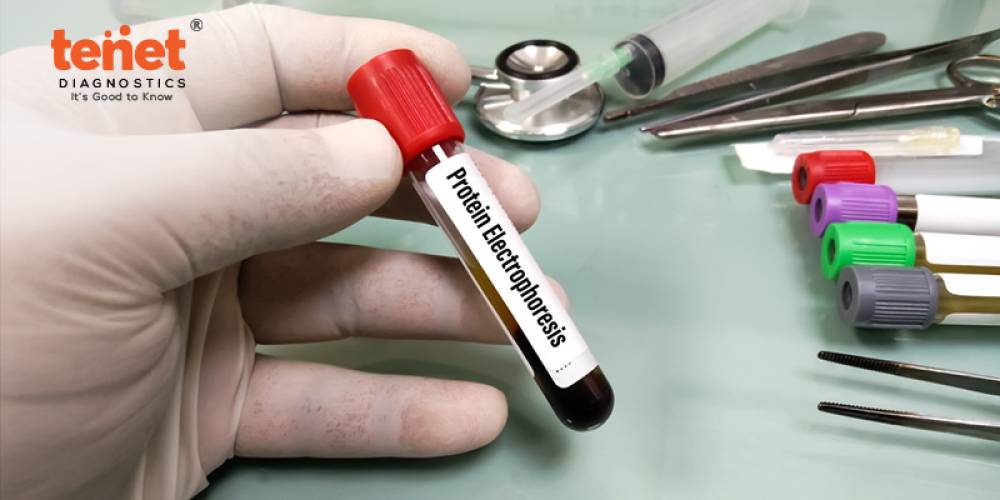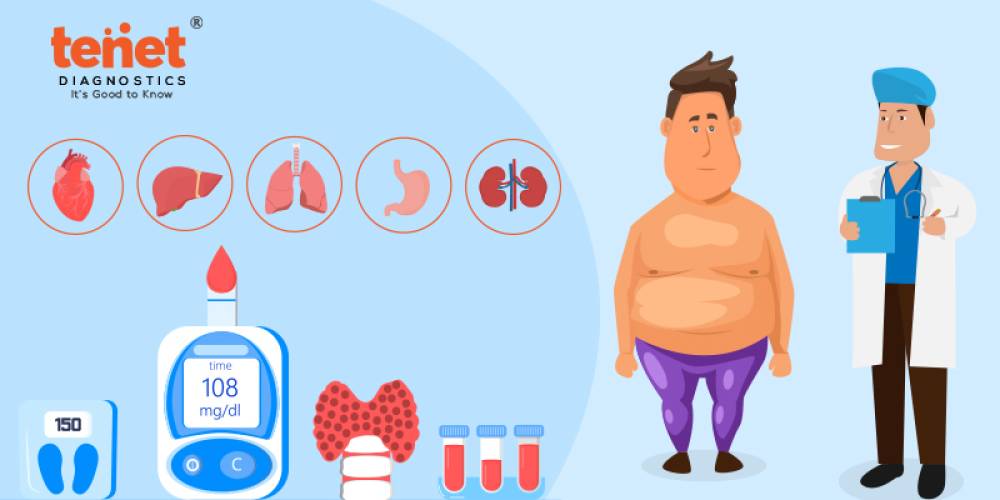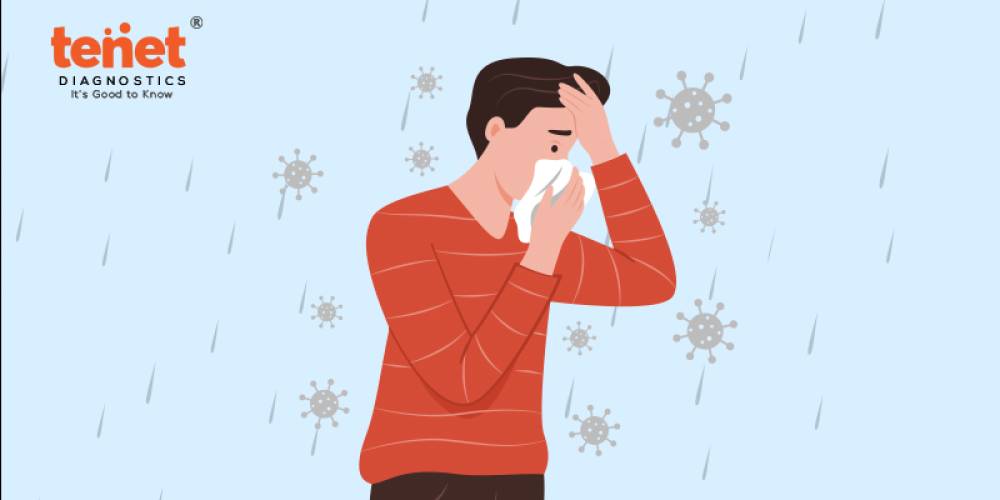A lipid profile test is a set of tests used to determine the factors that increase the risk of atherosclerosis, stroke, and cardiovascular disease. It enables early intervention and other risk variables while interpreting the results.
Lipoproteins deliver water-insoluble Triglycerides and Cholesterol to various regions of the body via the bloodstream.A lipid profile testdetermines cholesterol and triglyceride levels. Cholesterol is a fatty substance stored in the blood and tissues and used as a source of energy by the body. It is simply the amount of fat in your bloodstream.
Cholesterol is extremely important for biological functions such as cell wall production, helping the body produce vitamin D, creating digestive bile juice in the small intestine, and allowing the body to produce certain hormones. If cholesterol levels rise rapidly, they may become a silent threat, putting you at risk of serious problems.
The body requires a definite amount of Cholesterol to function correctly, but too much Cholesterol can lead to life-threatening illnesses such as atherosclerosis.Unhealthy lipid levels can clog your arteries and increase your heart disease and stroke risk. They are also to blame for unhealthyweight gain. The main reasons for the high cholesterol levels are heredity, contemporary lifestyle, diet, weight, and medical history.
What Does a Lipid Profile Test Measure?
There are usually no indications or symptoms associated with high Cholesterol. A complete lipid profile examination determines whether you have high Cholesterol and evaluates your risk of heart disease, heart attack, and other blood vessel illnesses.
A lipid profile blood test detects the four types of fats (lipids) in your blood:
Total Cholesterol: It is the sum of all the Cholesterol in your blood.
Low-density lipoprotein (LDL) Cholesterol:This is known as bad cholesterol; an excess of LDL in the blood causes fatty deposits (plaques) to form in the arteries, reducing blood circulation. Plaques can sometimes rupture, resulting in a heart attack or stroke.
High-density lipoprotein (HDL) Cholesterol:This is known as good cholesterol because it helps to eliminate lousyCholesterol from the bloodstream while allowing blood to circulate freely.
Triglycerides:This is a form of blood fat. When you eat, your body transforms excess calories into triglycerides deposited in fat cells. Obesity, eating too many sugary foods or drinking too much alcohol, smoking, physical inactivity, and uncontrolled diabetes are all associated with high triglyceride levels.
The Importance of Lipid Test
A lipid profile is a snapshot of the quantity of beneficial and harmful lipids in your blood. High Cholesterol has been linked to heart disease, obesity, diabetes, and other health problems. A lipid profile is required for those at a higher risk of specific illnesses or diagnosed with them.
The likelihood of cholesterol-related disorders can be determined using a lipid profile. It is frequently suggested as part of a regular health check-up practice. It has also been done to see how effectivethe specific cholesterol-lowering medicine/treatment and lipid-lowering lifestyle adjustments are.
Who Should Get aLipid Profile Test?
If you fall into more than one of these categories, you should discuss getting a lipid profile done with your doctor.
• Smoker
• Sedentary lifestyle (no routine for physical exercise)
• Unhealthy diet (high sugar, salt, and fats consumption)
• Diagnosed with a pre-existing health condition such as hypertension, diabetes, heart problem
• Have a family history of the conditions mentioned above
• Male > 45 years or female > 50-55 years
• Overweight/obese
• A family history of dyslipidemia or heart attack
How to Prepare for a Lipid Test?
If you have a complete lipid test, you should not eat or drink anything other than water for nine to twelve hours before thetest. Your doctor may urge you to fast before getting your cholesterol levels tested in specific instances.
• You must fast for 12-14 hours before the test, and do not eat or drink anything. Only water is allowed.
• If you are taking diabetes medication (oral or injectable), check with your doctor to see if you can take it before the test.
• Before taking the test, you must avoid eating anything fatty.
• A day before the lipid profile test, no alcohol should be consumed.
• Before the test, avoid doing any high-impact or vigorous activities.
• You should tell the doctor everything you know about your medical history, your family history of heart disease/hypertension, and what medications and supplements you are taking.
• If you have had a heart attack, surgery, an injury/infection/trauma, or were pregnant, you will need to wait at least two months before getting a lipid profile.
How is a lipid profile test performed?
The lipid profile test procedureis very straightforward. Small amount of blood is drawn from your arm to get a lipid profile blood sample. The phlebotomist will clean the area on your arm with an antiseptic solution, identify a vein near the skin's surface, and take blood using a syringe. This operation is relatively painless and rapid.
• After collecting the blood sample, the skin puncture will be cleansed and sealed with a bandage.
• Because this is an outpatient treatment, you can go home after taking the blood sample.
• Double-check that you followed all the preparatory stages accurately on and before the test day.
How to Understand the Lipid Profile Test Results?
The lipid profile test report often includes the following components, and below are the lipid profile test normal ranges for the cholesterol component.If you have abnormal lipid levels, do not make dietary or prescription changes without first consulting your doctor.
These tables show what is deemed healthy and unhealthy in general. You should review your lipid profile with your doctor in detail and strictly adhere to the cholesterol-lowering strategy. Your cholesterol levels alone do not tell the whole story. Before a treatment plan, the doctor must consider the risk factors linked to your body.
In general, the cholesterol levels are measured in mg of Cholesterol per deciliter of blood. Below the values mentioned are the typical ranges of cholesterol levels.
The Final Word
To summarize, high cholesterol is quite manageable. Follow your doctor’s advice and make certain lifestyle modifications. It could involve an exercise plan, dietary adjustments, and other daily rituals. If your doctor has prescribed cholesterol-lowering medicine, you should take it as directed for the specified amount of time. The more serious you are about adopting lifestyle changes and considering taking prescribed drugs, the better the results will be.







